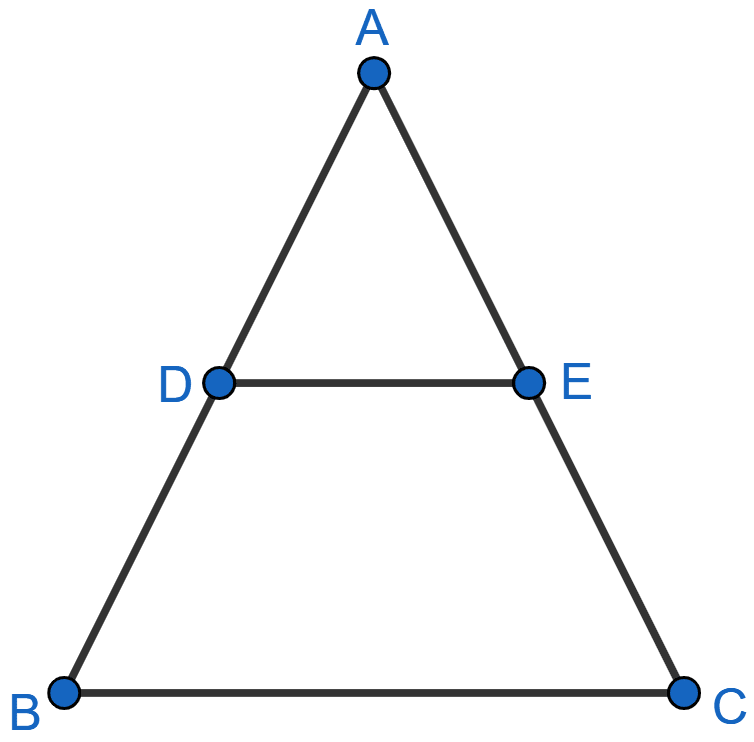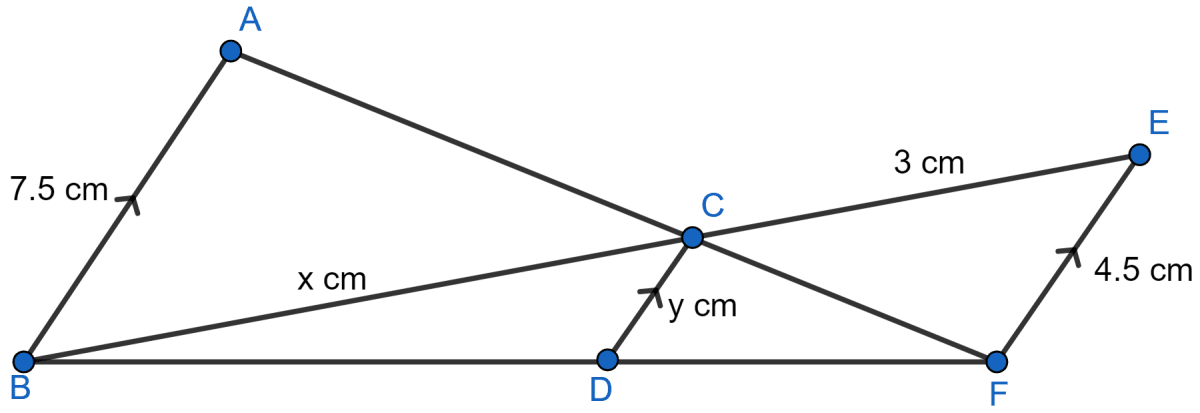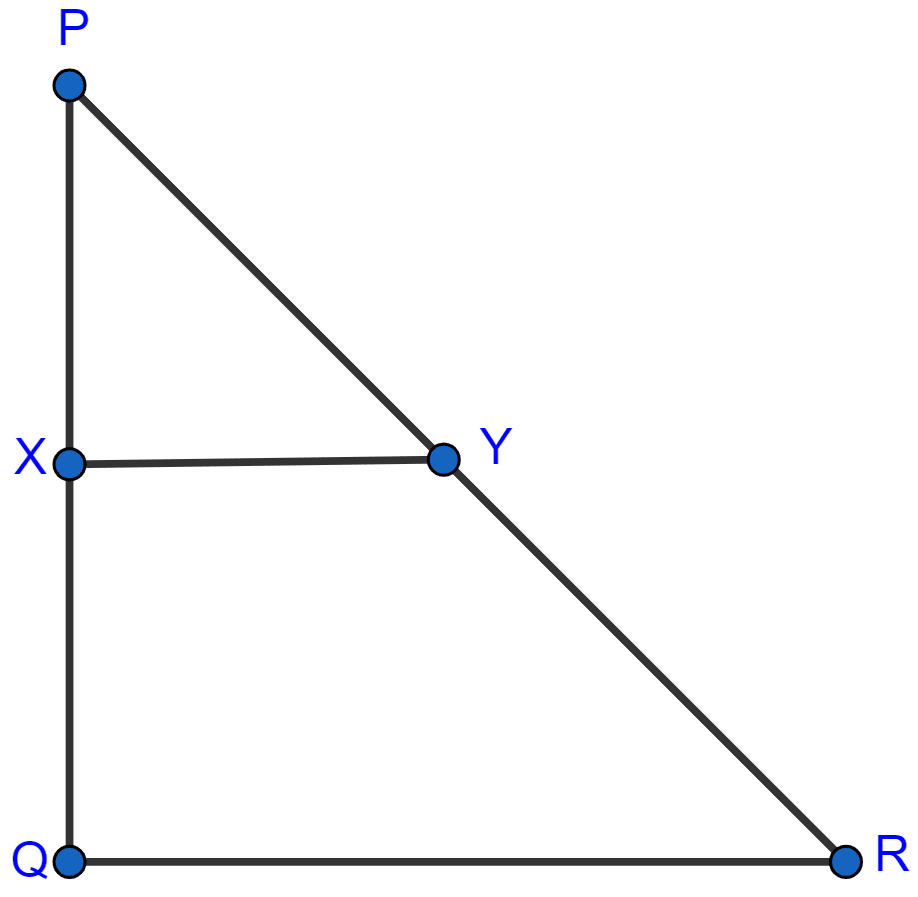Mathematics
A line segment DE is drawn parallel to base BC of ∆ABC which cuts AB at point D and AC at point E. If AB = 5BD and EC = 3.2 cm, find the length of AE.
Similarity
18 Likes
Answer
Given,
⇒ AB = 5BD
⇒ AD + BD = 5BD
⇒ AD = 5BD - BD
⇒ AD = 4BD
⇒ .

Given DE || BC,
by basic proportionality theorem :
Hence, AE = 12.8 cm
Answered By
11 Likes
Related Questions
In ΔABC, D and E are the points on sides AB and AC respectively.
Find whether DE || BC, if
(i) AB = 9 cm, AD = 4 cm, AE = 6 cm and EC = 7.5 cm.
(ii) AB = 6.3 cm, EC = 11.0 cm, AD = 0.8 cm and EA = 1.6 cm.
In the given figure, ΔABC ~ ΔADE. If AE : EC = 4 : 7 and DE = 6.6 cm, find BC. If 'x' be the length of the perpendicular from A to DE, find the length of perpendicular from A to BC in terms of 'x'.

In the figure, given below, AB, CD and EF are parallel lines. Given AB = 7.5 cm, DC = y cm, EF = 4.5 cm, BC = x cm and CE = 3 cm, calculate the values of x and y.

In the figure, given below, PQR is a right-angled triangle at Q. XY is parallel to QR, PQ = 6 cm, PY = 4 cm and PX : XQ = 1 : 2. Calculate the lengths of PR and QR.
